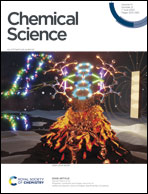A focus on aromaticity: fuzzier than ever before?
Abstract
The field of aromaticity has grown five-fold in the last two decades as revealed by Merino et al. in their Perspective “Aromaticity: Quo Vadis” where they ask where the field is heading (Chem. Sci., 2023, https://doi.org/10.1039/D2SC04998H). Numerous computational tools for aromaticity analysis have been introduced and novel classes of molecules that exhibit aromatic (or antiaromatic) features have been explored experimentally. Hence, the aromaticity concept is broader and possibly fuzzier than ever. Yet, earlier it also triggered vigorous debates after periods when new analysis tools emerged, and it survived. Today's debate reveals that the field is vital and that new knowledge is produced. Yet, as much as we ask where the field is moving, we should ask “Aromaticity: Cui Bono?”; who utilizes the aromaticity concept and who benefits from it? Especially, who benefits from it being overly fuzzy and who does the opposite? It is an exciting debate. We should get out of it with a better understanding of the chemical-bonding phenomenon labelled aromaticity.

- This article is part of the themed collections: Chemical Science Focus Articles, 2024 and Emerging Frontiers in Aromaticity


 Please wait while we load your content...
Please wait while we load your content...